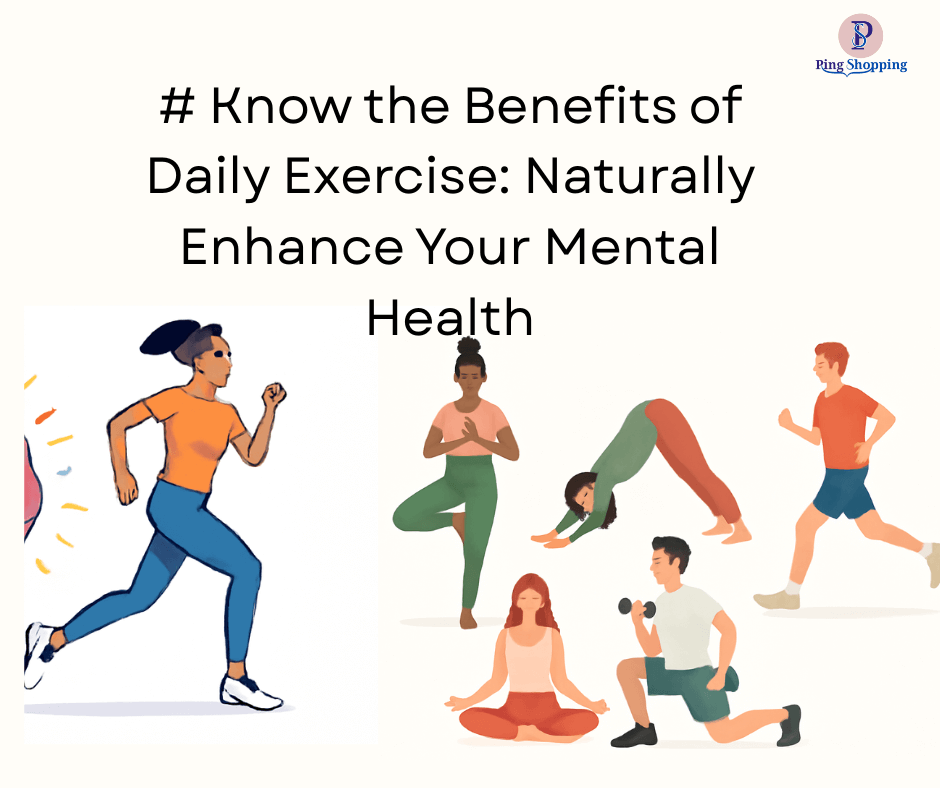The Mind-Body Connection: How Exercise Transforms Mental Health for the future
The relationship between physical activity and mental well-being has never been more scientifically validated or socially relevant. While we often focus on exercise for physical fitness, emerging research reveals that physical activity might be one of our most powerful tools for mental health management, offering benefits that rival traditional treatments.
Table of Contents
| Section |
| 1. The Science Behind Exercise & Mental Health |
| 2. Exercise vs. Traditional Treatments |
| 3. Mental Health Conditions & Exercise |
| 4. Types of Exercise for Mental Health |
| 5. Beyond Individual Benefits: The Social Connection |
| 6. Your Mental Health Exercise Plan |
| 7. The Stress-Busting Power of Movement |
| 8. Building Mental resilience |
| 9. Conclusion |

- What is the science behind exercise & mental health?
Neurochemical Transformation:
When you are engaged in physical activity, your brain undergoes remarkable changes. Exercise triggers the release of endorphins—natural mood elevators that create feelings of euphoria and well-being. Simultaneously, your body increases production of serotonin and dopamine, neurotransmitters crucial for regulating mood, focus, and emotional stability.
Perhaps most importantly, exercise reduces cortisol levels—the stress hormone that, when chronically elevated, contributes to anxiety, depression, and cognitive decline. This neurochemical rebalancing creates an optimal environment for mental wellness.
2. Exercise vs. Traditional Treatments
Groundbreaking Research Findings:
A comprehensive analysis of nearly 100 meta-reviews revealed that physical activity is 1.5 times more effective than medication or psychotherapy for treating mild-to-moderate depression, anxiety, and psychological stress. The study found that exercise interventions produced a 42-60% reduction in mental health symptoms, compared to just 22-37% for traditional treatments. On the other hand, sometimes we see that after completing a surgery or taking a medication, we don’t get any results, or it shows other syndromes.
Even more remarkable: just 15 minutes of running daily or one hour of walking reduces major depression risk by 26%. For anxiety specifically, even five minutes of aerobic activity can begin stimulating anti-anxiety effects.
Most Unique Advantages of Exercise:
Unlike traditional treatments, exercise offers:
- No side effects (when done appropriately)
- Additional physical health benefits
- Lower cost and greater accessibility
- Longer-lasting effects that may outlast medication benefits
- Immediate and long-term benefits
3. Mental Health Conditions: Exercise as Medicine
Depression Management :
Studies show exercise works as well as antidepressant medication for some individuals. Increases BDNF (brain-derived neurotrophic factor), promotes neuroplasticity and new brain cell growth. Resistance training shows the largest effect on depression symptoms
Anxiety Relief :
A 10-minute walk can be as effective as a 45-minute workout for immediate anxiety relief. Mind-body activities like yoga are most effective for anxiety reduction. Regular exercise reduces anxiety disorder risk by 25% over five years.
Cognitive Function Enhancement :
Exercise stimulates hippocampus growth, enhancing memory formation and retention. Physical activity increases alertness and cognitive function, which is especially beneficial when stress has depleted mental energy. Regular exercise helps prevent cognitive decline in adults over 50.
4. How many types of exercise for mental health:
High-Impact Activities for Mental Health
- Aerobic Exercise (running, cycling, swimming): Endorphin boost, anxiety reduction. 150 minutes/week moderate intensity. Depression, general mood enhancement.
- Resistance Training: Self-esteem, body image, and depression relief. 2-3 sessions/week. Depression, confidence building.
- Yoga & Mindfulness Movement: Stress reduction, anxiety management. 3-4 sessions/week. Anxiety, stress, and emotional regulation.
- Walking: Accessible mood improvement and stress relief. 2-3 sessions/week. Severe depression, high stress.
Most Unique Advantages of Exercise:
Unlike traditional treatments, exercise offers:
- No side effects (when done appropriately).
- Additional physical health benefits.
- Lower cost and greater accessibility.
- Longer-lasting effects that may outlast medication benefits.
- Immediate and long-term benefits.
5. Beyond Individual Benefits: The Social Connection
Exercise offers unique opportunities for social interaction, combating the isolation often associated with mental health challenges. Group fitness classes, walking clubs, and team sports provide:
- Community support and social connection.
- Accountability for maintaining routines.
- Shared achievement experiences that boost self-esteem.
- Distraction from negative thought patterns.

6. Getting Started: Your Mental Health Exercise Plan
Week 1-2: Foundation Building:
- Start with 10-15 minutes of walking daily.
- Add simple stretching or basic yoga poses.
- Focus on consistency over intensity.
Week 3-4: Expansion:
- Increase walking to 20-30 minutes.
- Add 1-2 strength training sessions.
- Experiment with different activities to find preferences.
Month 2 and Beyond: Integration:
- Aim for 150 minutes of moderate activity weekly.
- Include 2-3 strength training sessions.
- Add mindfulness-based movement like yoga.
Key Success Strategies
- Start small: Even 5 minutes counts and builds the habit.
- Choose enjoyable activities: You’re more likely to continue exercise you enjoy.
- Set realistic goals: Focus on consistency rather than perfection.
- Track mood changes: Note improvements in sleep, energy, and emotional state.
- Seek support: Consider group activities or workout partners.
7. What is stress-busting power of movement
Understanding the Stress Response
When faced with stress, your body activates the hypothalamic-pituitary-adrenal (HPA) axis, releasing stress hormones including cortisol and adrenaline. While this response is adaptive in short bursts, chronic activation leads to numerous health problems, including anxiety, depression, and physical illness.
How Exercise Combats Stress
Cortisol Reduction: Exercise acts as a natural cortisol regulator. While physical activity temporarily raises cortisol during the workout, regular exercise significantly lowers baseline cortisol levels.
Adrenaline Management: Regular aerobic exercise helps regulate adrenaline levels. Research shows that 21 days of consistent aerobic activity significantly reduces stress hormone adrenaline.
Parasympathetic Activation: Activities like yoga activate the parasympathetic nervous system, promoting the “rest and digest” response that counters the stress-induced “fight or flight” state.
8. Building Mental Resilience:
Physiological Resilience:
When you move your body regularly, you’re not just strengthening your muscles—you’re training your stress response system too. Exercise helps you bounce back more quickly from stressful moments and makes you less reactive to everyday pressures.
Psychological Resilience:
Every time you push through a tough workout, you’re proving something to yourself. Overcoming physical challenges builds a sense of confidence and self-belief that naturally spills over into other areas of life. You begin to feel more capable of handling whatever comes your way.
Body Image & Self-Perception:
As your fitness improves, so does the way you see yourself. Regular exercise shapes not just your body but also how comfortable and satisfied you feel in it. That positive shift in body image can greatly boost overall self-esteem.
Achievement & Mastery:
Tracking steady progress—lifting a little heavier, running a little farther, or mastering a new skill—gives you visible proof of personal growth. These small wins add up, reinforcing a sense of accomplishment and capability.
Social Connection:
When you join a group workout, a running club, or even just make a gym buddy, you gain something more than fitness: a sense of community. Sharing the journey with others provides motivation, support, and the simple joy of belonging—an essential part of mental well-being.
Long-Term Mental Health Protection
Lower Risk of Mental Health Disorders: People who exercise regularly are significantly less likely to develop depression or anxiety than those who remain sedentary. It’s one of the simplest yet most powerful forms of long-term mental health insurance.
Better Emotional Regulation: Movement helps balance mood and sharpens emotional control, making negative feelings less intense and shorter-lived. It’s a natural way to keep emotions in check and maintain mental clarity.

9. Conclusion: Movement as Medicine for the Mind
The evidence is overwhelming: exercise represents one of the most powerful, accessible, and effective interventions for mental health available today.





